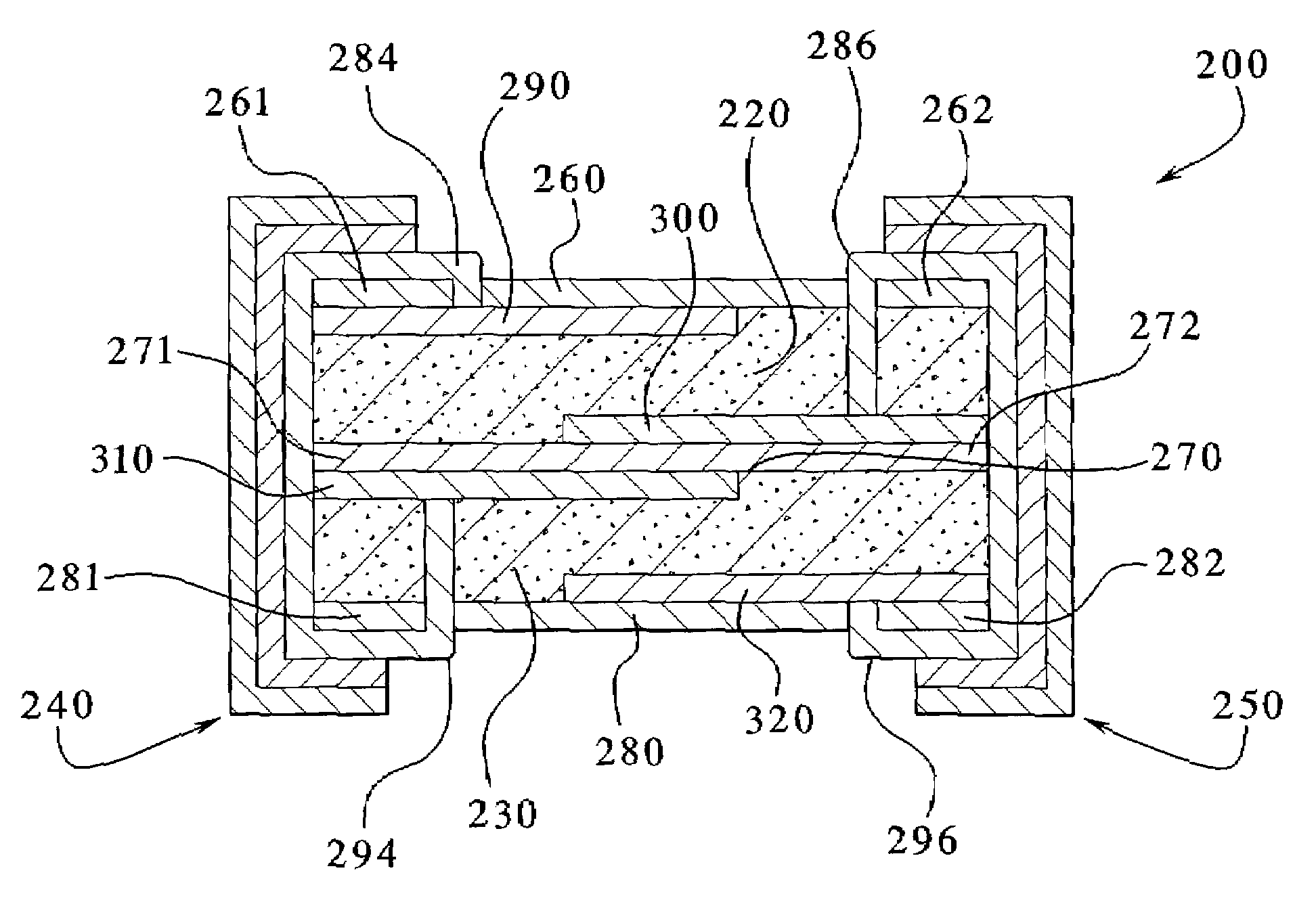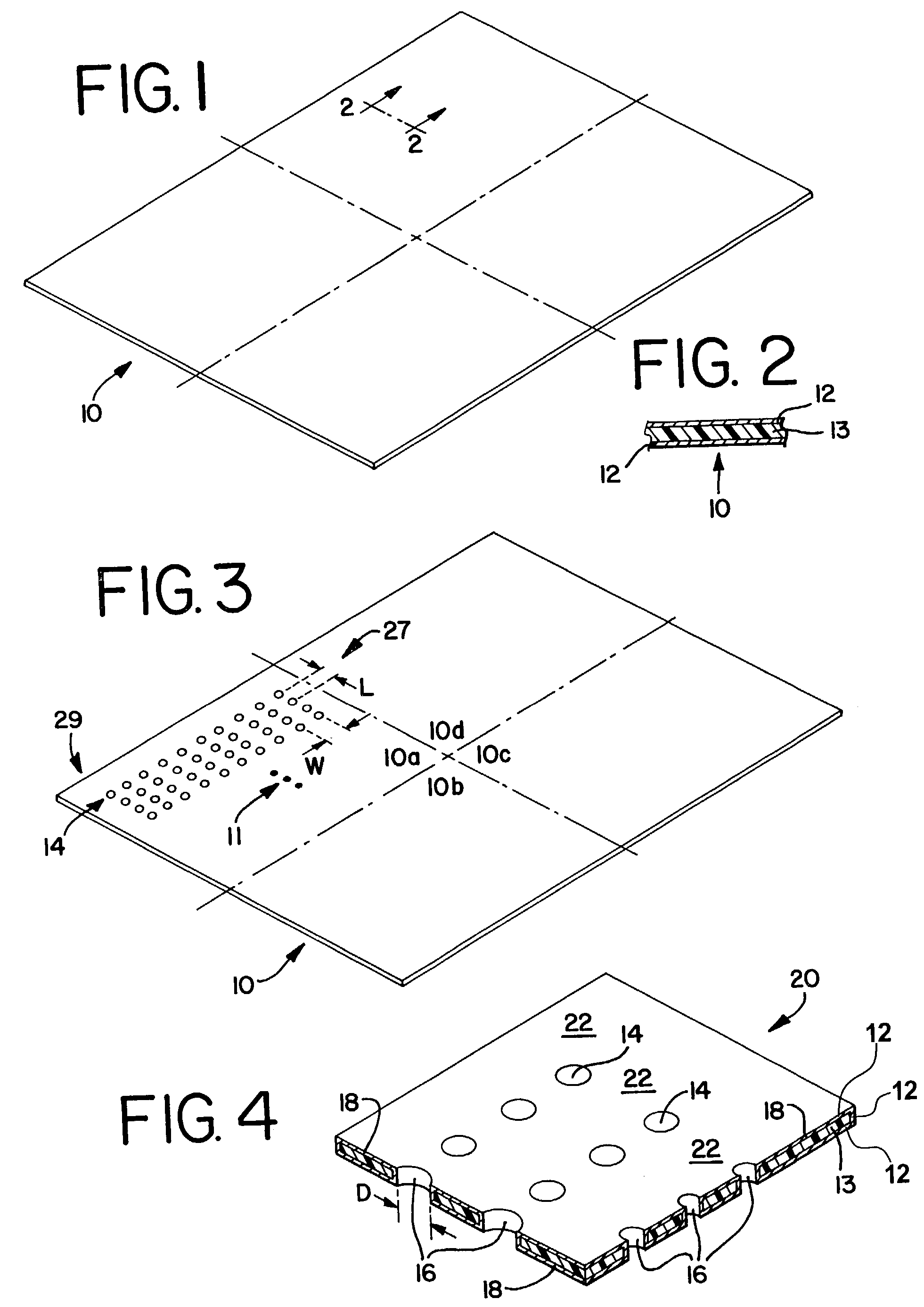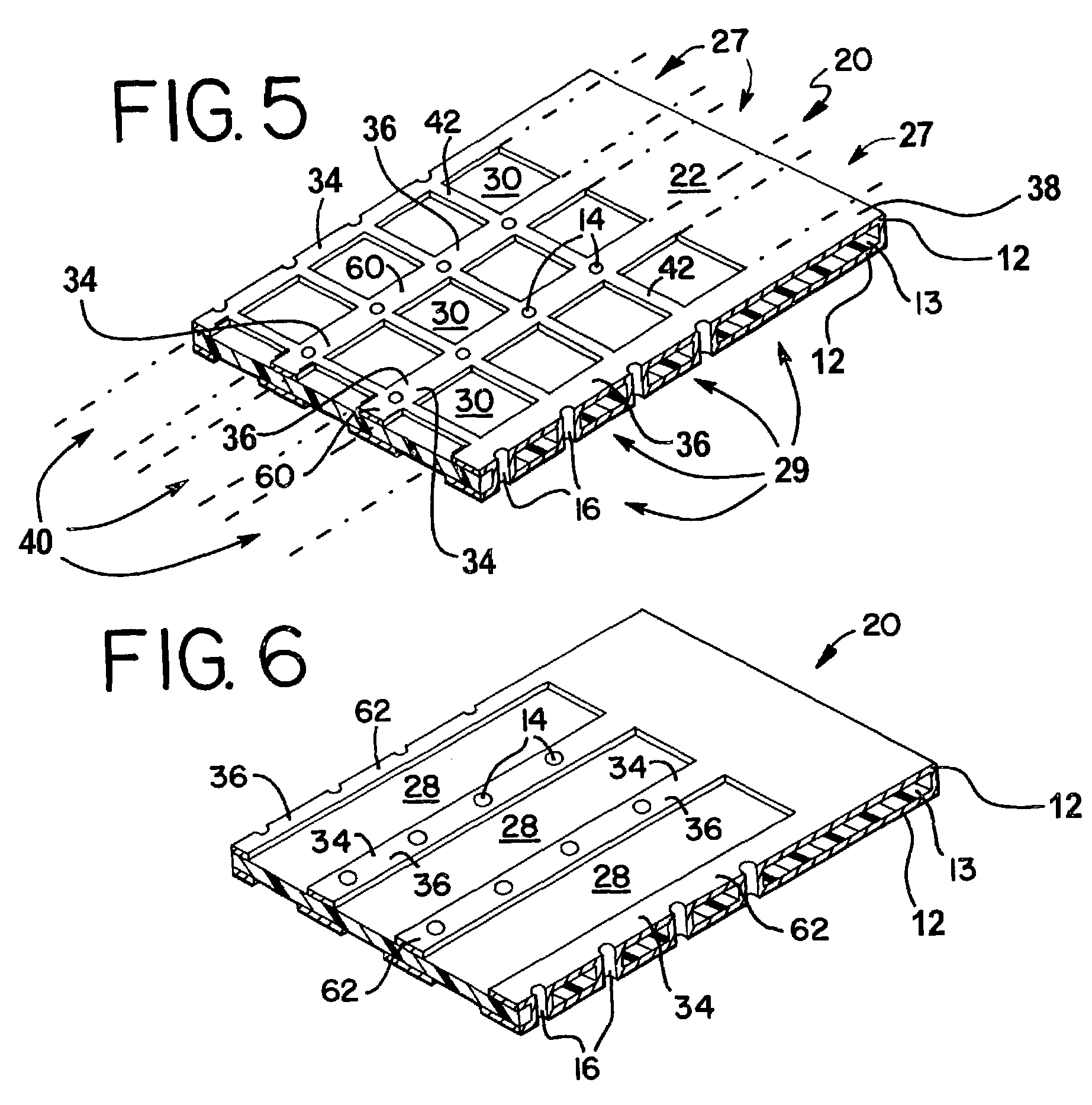Method for plasma etching to manufacture electrical devices having circuit protection
a technology of circuit protection and plasma etching, which is applied in the direction of etching metal masks, positive temperature coefficient thermistors, printed element electric connection formation, etc., can solve the problems of preventing good electrical connection, causing resin smear on the substrate, and using expensive and environmentally harsh chemical processes. , to achieve the effect of improving the method of etching a substrate, reducing the cost of etching, and improving the manufacturing process
- Summary
- Abstract
- Description
- Claims
- Application Information
AI Technical Summary
Benefits of technology
Problems solved by technology
Method used
Image
Examples
Embodiment Construction
[0044]The present invention provides methods for manufacturing devices having circuit protection and devices so manufactured. It should be appreciated that a variety of such devices can be manufactured.
[0045]An embodiment of the present invention is shown in FIG. 11. The thin film, surface-mounted electrical protection component is a subminiature device used in a surface mount configuration on a PC board. One such electrical protection component is a fuse. A fuse common in the art is an “A” case fuse. The standard industry size for “A” case fuses is 120 mils long by 60 mils wide. The “A” case fuse is also designated as a 1206 fuse. In addition, the present invention includes even smaller sized fuses, which are compatible with standard sized surface mountable devices. The present invention can be used with all other standard sizes of such surface mountable device sizes, such as 1210, 0805, 0603 and 0402 fuses, as well as non-standard sizes. The present invention can be used with a va...
PUM
| Property | Measurement | Unit |
|---|---|---|
| Time | aaaaa | aaaaa |
| Current | aaaaa | aaaaa |
| Area | aaaaa | aaaaa |
Abstract
Description
Claims
Application Information
 Login to View More
Login to View More - R&D
- Intellectual Property
- Life Sciences
- Materials
- Tech Scout
- Unparalleled Data Quality
- Higher Quality Content
- 60% Fewer Hallucinations
Browse by: Latest US Patents, China's latest patents, Technical Efficacy Thesaurus, Application Domain, Technology Topic, Popular Technical Reports.
© 2025 PatSnap. All rights reserved.Legal|Privacy policy|Modern Slavery Act Transparency Statement|Sitemap|About US| Contact US: help@patsnap.com



